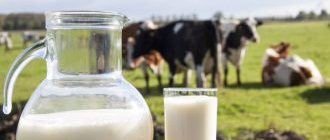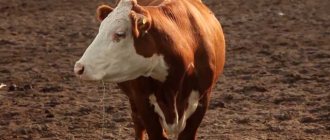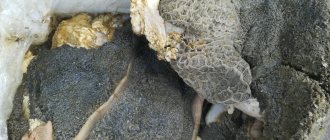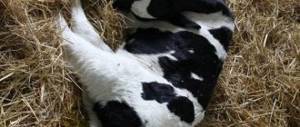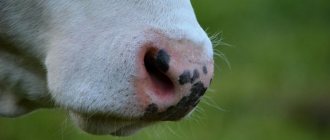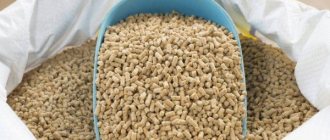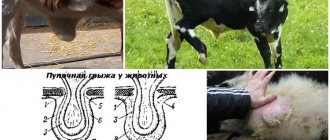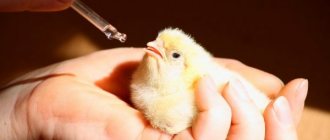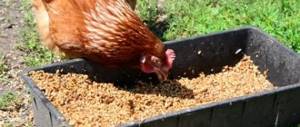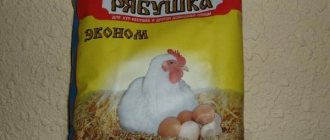July 12, 2021
We often hear the term “vitaminosis” in colloquial speech, and this term is used to explain any state of “ill health.” However, true vitamin deficiency is an extreme degree of disease caused by a lack of one or more groups of vitamins
We often hear the term “vitaminosis” in colloquial speech, and this term is used to explain any state of “ill health.” However, true vitamin deficiency is an extreme degree of disease caused by a lack of one or more groups of vitamins.
Acute vitamin deficiency seriously affects metabolic processes in the body and has a number of specific clinical manifestations. This condition requires medical correction and treatment, as it can lead to quite severe disturbances in the functioning of internal organs. True vitamin deficiency is very rare in medical practice.
Vitamin standards for cattle
In order for the calf to grow well, develop and not suffer from vitamin deficiency, healthy supplements must be included in the diet. To provide calves with fortified feed, it is necessary to know the feeding standards.
Standards for dairy heifers:
| Age (months) | Carotene (mg) | Vit. D (ME) | Vit. E (mg) |
| 1 | 30 | 700 | 30 |
| 2 | 40 | 1100 | 55 |
| 3 | 60 | 1500 | 85 |
| 4 | 75 | 1900 | 110 |
| 7 | 115 | 2500 | 180 |
| 10 | 135 | 3000 | 230 |
| 13 | 150 | 3800 | 250 |
| 19 | 185 | 5300 | 300 |
| 25 | 235 | 6300 | 330 |
Standards for breeding bulls:
| Age (months) | Carotene (mg) | Vit. D (ME) | Vit. E (mg) |
| 9 | 200 | 3800 | 260 |
| 13 | 240 | 5000 | 330 |
Causes of vitamin deficiency
Vitamins for calves come first for full growth and development. With sufficient vitamin supplementation, the body of young animals functions normally. If there is a deficiency, a malfunction occurs in the body, which leads to a decrease in milk yield. As a result, the farmer has no profit, and the cow suffers from vitamin deficiency.
Vitamins play an important role for the proper development of young animals and prevent the occurrence of vitamin deficiency:
- support health, as each vitamin plays a specific role;
- with the correct selection of vitamin supplements, pregnant cows tolerate childbirth better, and lactation proceeds normally; Important! When feeding a calf, the cow gives away most of the nutrients along with the milk, so 2 weeks before calving, an adult animal is given a double vitamin dose.
- during the dry period, they provide the basis for the full development of the fetus, and also prepare the cow for the upcoming lactation;
- Thanks to fortified feeding, beef bulls quickly increase their body weight.
Symptoms of vitamin deficiency
With an unbalanced diet without the addition of nutrients and microelements, the body of young animals suffers first. Vitamin deficiency often occurs in winter and early spring. This is due to the reduction in sunny days and the lack of green vegetation. In regions with harsh winters, animals spend little time outdoors, which affects their health.
With vitamin deficiency, the animal experiences:
- Decreased appetite. This is due to the fact that the lack of nutrients responsible for the functioning of the digestive system provokes a partial refusal of food, which leads to a sharp decrease in body weight.
- Low milk yield of cows. Lack of healthy nutrition affects the quantity and quality of milk. If you approach feeding irresponsibly, the cow can not only reduce her milk yield, but even stop it completely.
- Reproductive passivity. With vitamin deficiency, breeding bulls lose the desire to mate. Cows in this state are less likely to be inseminated, and during gestation, miscarriages often occur or dead calves are born.
- Calves should not be allowed to suffer from vitamin deficiency, as they will stop growing and developing.
- Meat breeds dramatically lose body weight.
- Vitamin deficiency opens the door to chronic and infectious diseases.
- If an animal has a cataract, vitamin deficiency can lead to blindness.
What vitamins are most often deficient?
Most often, cows suffer from a lack of vitamins: A, B, D and E.
The source of retinol is green grass. It contains carotene, which is responsible for the production of cells throughout the body.
Due to a lack of carotene, milk yield decreases, vision deteriorates, and damaged skin is poorly regenerated.
Carotene deficiency in cows can be recognized by the following symptoms:
- frequent inflammation of the eyes and mucous membranes;
- sudden loss of vision - animals bump into various objects, bow their heads closer to the ground;
- decrease in milk yield;
- inflammation of the digestive and respiratory systems;
- violation of movement coordination;
- reproductive function is suppressed.
Group B vitamins renew blood cells, strengthen the nervous system, and are responsible for brain activity. Particular attention is paid to vitamin B12, as it is a good preventative measure for many infectious diseases and protects against anemia.
With its deficiency, cows experience:
- lack of appetite, which leads to thinness and slow growth of calves;
- excited state, nervousness;
- skin diseases such as eczema, dermatitis;
- joint inflammation;
- cavalry gait. The cow raises her legs high and bends her legs strongly;
- miscarriage in early pregnancy and premature stillbirth of calves.
Vitamin D is responsible for the growth and development of the body. If there is not enough of it, the calf stops growing, and the supply of calcium also stops, which leads to rickets, brittle bones and teeth.
If there is a lack of calciferol in a calf, the following are observed:
- periodontal disease, tooth loss;
- rickets;
- lameness;
- pain on palpation in the area of the ribs, joints, pelvic bones;
- eating bones and stones, as well as licking various objects;
- refusal to eat;
- malfunction of the digestive system.
Important! Lactating cows and young calves born in winter or early spring often experience a shortage.
Cows enrich their bodies with calciferol by consuming green grass and spending long periods of time outdoors.
Vitamin E is responsible for the functioning of all internal organs, participates in metabolism and is responsible for the reproductive system. Lack of tocopherol affects the development of the fetus and is responsible for the health of the young.
With a lack of tocopherol, cows develop the following symptoms:
- a cow does not become pregnant for a long time;
- regular miscarriages;
- stillborn fetuses;
- diseases of the cardiovascular system;
- sperm activity decreases in breeding bulls;
- the growth and development of calves stops;
- Beef breeds build muscle mass slowly.
With an acute lack of tocopherol, paralysis of the limbs can occur.
Nutritional depletion hypovitaminosis and vitamin deficiency in calves
These diseases are quite common in calves and are characterized by metabolic disorders and wasting. The main reasons for their appearance are disturbances in the feeding of young animals, when the supply of substances needed by the body does not cover their consumption. Metabolic disorders lead to slower growth of the animal, delayed development, susceptibility to infections and infestations
(helminthic diseases).
A similar phenomenon is observed when a calf is kept in a cold, dirty and damp room, on damp bedding, when even satisfactory feeding cannot balance the enormous energy consumption spent on warming the body, the work of internal organs and adaptive systems.
This is especially noticeable in the winter-spring months, when the body’s reserves of nutrients and vitamins are depleted. Metabolic disorders due to starvation or increased consumption of nutrients to maintain life in unfavorable conditions are characterized by exhaustion and a sharp retardation of the calf in growth and development. Such calves are often called “little ones.”
Signs of the disease are: sudden weight loss, decreased skin elasticity, and sunken eyes. Body temperature usually remains within normal limits, but sometimes drops slightly. The calf is progressively weakening, staggers when moving, and has difficulty standing up. Such disorders are especially difficult for young calves at the age of 2-6 months, when, due to the insufficient development of the proventriculus (rumen, mesh, book), they are not able to fully absorb plant foods, and energy reserves (fat) during this period are very limited.
Read also: Fattening bulls for meat at home: an effective diet
The main goal of treatment is to restore the animal's nutritional status. This requires complete rest, keeping in a warm room, on a soft straw bedding and dietary nutrition - acidophilic yogurt, skim milk, buttermilk, milk substitutes, oatmeal, oatmeal, good hay.
When the calf regains strength, it is gradually transferred to normal feeding, balanced in accordance with its age. In the summer, in addition to dietary supplements, emaciated calves should be fed fresh green feed and provided with good pasture.
The lack of vitamins causes diseases called avitaminosis, and their deficiency causes hypovitaminosis. There may be private vitamin deficiency, when one vitamin is missing, for example A or D.
The manifestations of such vitamin deficiencies are very characteristic and strictly specific, which is why they have their own names, for example, rickets, polyneuritis, xerophthalmia, etc. More often, animals suffer from a lack of several vitamins at the same time, this disease is called polyvitaminosis.
The initial stage of the disease is uncharacteristic. It is manifested by loss of appetite, emaciation, cessation of growth, delayed molting and a number of other signs. Subsequently, the disease takes on the character of hypovitaminosis, characteristic of a deficiency of one or another vitamin. One of these hypovitaminosis, widespread among calves, is hypovitaminosis A, observed most often in the spring, when both the body and the cow’s milk are poor in vitamin A and carotene due to their low content in feed. The disease is expressed by general weakness, as a result of which the calf after birth cannot get up and stand on its own for several hours and sometimes days. As a rule, a calf has a low body temperature at birth (37-38°C), low live weight, and subsequently grows and develops poorly.
Sometimes calves are born blind or lose their sight in the first days of life. Vitamin deficient calves develop inflammatory processes in the mucous membranes of the nasal cavity with the release of pus, which are difficult to treat, and inflammation of the bronchi and lungs. All this is the result of a violation of the protective function of epithelial tissues, which largely depends on the presence of vitamin A in the body. The main means of treatment and prevention of this disease should be considered feeding of pregnant cows and newborn calves, complete in terms of carotene (provitamin A) and protein content.
Foods containing large amounts of provitamin A-carotene include red carrots, green dried hay, sprouted grains, grass meal, legumes and cereals. Among the therapeutic agents for hypovitaminosis A, fortified fish oil, vitamin A concentrate, etc. are used daily until complete recovery.
Treatment of vitamin deficiency in cows
If vitamin deficiency is detected in cows based on symptoms, treatment must be started immediately. To do this, you need to properly balance your diet and start providing assistance.
If there is a lack of carotene in the feed, add:
- "Biovit-80" - improves the digestive system and strengthens muscle tone;
- “Eleovit” – increases immunity, the drug is recommended to be added to the feed of calves at birth;
- "Vilofoss" - the drug saturates the body of cows with proteins and vitamins.
Also included in the diet are carrots, fish oil, alfalfa hay, oatmeal and oatmeal jelly. Kissel is prepared in the evening. To do this, flakes or whole grains are poured with boiling water and covered with a warm blanket. The drink will infuse overnight and can be given to the calf. For young animals at the age of 1 month, the daily dose should be 2.5 kg of jelly, and the norm of root vegetables should be 2 kg.
If it is not possible to introduce carotene into the diet, you can supplement it with medication. For an adult pregnant cow, the daily oral intake should be 100 thousand IU, and for young calves the dose is 1 million IU at the first feeding. Cows can also be given an intramuscular injection of 100,000 IU every 2 weeks.
Important! When treating vitamin deficiency, the dosage of drugs should be prescribed by a veterinarian after examining the livestock.
At the first signs of vitamin B deficiency, it is necessary to begin treatment immediately, without waiting for complications. Treatment consists of adding carrots, brewer's yeast and bran to the feed.
In advanced forms of vitamin deficiency, intramuscular injections of vitamin B12 are prescribed. To do this, use a 0.1% solution in a volume of 100 ml.
If a farmer detects symptoms of an animal suffering from a lack of calciferol, then first of all it is separated from the general herd. The calf is transferred to a certain diet, often taken out to pasture on sunny days, since the best helpers against vitamin deficiency are bright sun and green grass.
In advanced stages of vitamin deficiency, drug therapy should be used. Before treatment begins, the cow's blood is taken for electrolyte levels.
Drug treatment of vitamin deficiency is carried out in several ways:
- ultraviolet radiation – 10-15 minutes daily;
- intramuscular injections of vitamin D at a dosage of 200 IU;
- for progressive disease, a 20% solution of calcium gluconate is prescribed;
- intravenous injection of 10% calcium chloride.
To replenish the supply of tocopherol, use the Trivitamin oil solution. The dosage is prescribed only by a veterinarian after a complete examination.
Advice! Vitamin deficiency is better prevented than treated.
Varieties
The absence of one vitamin in the body is called monoavitaminosis. However, more often cows suffer from a deficiency of several vitamins at the same time - polyavitaminosis.
Vitamin deficiency A
A lack of vitamin A in the diet indicates a lack of carotene in it. This most often affects calves and cows with increased lactation. If you have a complete diet - silage with vitamin-rich combined feed - it is necessary to check the functioning of the gastrointestinal tract. Some gastrointestinal problems have a bad effect on the absorption of carotene from food.
Three month old calf showing signs of vitamin A deficiency
Symptoms:
- decreased appetite, slower growth of young animals;
- dryness of the mucous surface of the eyes;
- deterioration of vision - animals bump into various objects, bend excessively towards the ground;
- inflammation of the respiratory and digestive organs;
- cessation of estrus in cows and reduction in semen quality in bulls;
- threat of miscarriage, oxygen and water starvation of the fetus, premature birth.
Treatment
In addition to the basic diet, you should take vitamin A. The following products are also suitable for replenishing carotene and rapid growth for calves:
- "Biovit 80" - improves the functioning of the gastrointestinal tract and strengthens muscle tone;
- "Eleovit" - improves immunity and can be used from birth;
- Vilofoss - saturates animals of any age with proteins and vitamins.
Vilofoss produces premixes for beef, dairy cattle and calves
Their diet also includes carrots, fish oil, alfalfa hay, and mixed feed with vitamin A. In addition, it is good to give oatmeal with grated carrots or potatoes and oatmeal jelly.
If it is impossible to replenish vitamin A by adjusting the diet, it is prescribed daily oral intake for pregnant cows (50–100 thousand IU) and a one-time dose for calves (1 million IU at the first feeding or from a bottle). Cows can also be administered 500,000–1,000,000 IU of the drug intramuscularly, repeated after 1.5–2 weeks.
To prevent disease, in spring and summer you should prepare vitamin feed, as well as a sufficient amount of carrots, beets and potatoes. It is also important to keep the animal's stall in good condition. It should be clean, insulated and well lit.
Vitamin B deficiency
This type of vitamin deficiency is more common in young animals; in adults it is quite rare.
To prevent vitamin deficiencies in calves, special attention should be paid to the cow’s nutrition after calving.
Symptoms:
- nervousness, unhealthy activity, spasms;
- muscle tremors and ataxia (impaired coordination of movements) occur;
- the animal raises its legs high and strongly bends its legs, as if walking along the parade ground;
- disruption of the digestive system, loss of appetite, exhaustion, stunting;
- skin problems - peeling, bald spots in the coat;
- swelling in the joint area.
Read also: Raising, feeding and keeping calves during the dairy and post-milk period
It is necessary to pay attention to changes in the behavior of the animal, without waiting for complications to appear. At the first symptoms, carrots, brewer's yeast, and bran should be added to the cow's or calf's diet.
For severe symptoms of vitamin deficiency, drugs of group B are prescribed. Typically, a 0.1% solution of cobalt chloride in a dosage of 100 ml is used for therapy.
Prevention
It is necessary that B vitamins are always contained in the diet of cows. They are found in bran, green hay, carrots, fodder or baker's yeast. In winter, you should add B vitamins to your food.
Vitamin deficiency D
Vitamin D is produced by the body of cattle under the influence of ultraviolet rays. It is responsible for normal phosphorus-calcium metabolism, and its deficiency can lead to osteomalacia (softening of bone tissue).
Most often, young animals and cows with high lactation suffer from vitamin D deficiency. This occurs due to the accelerated metabolism in these groups of animals.
Rickets in a calf
Symptoms:
- low activity of the animal, lameness;
- rickets, abnormal development of the limbs of young animals;
- weight loss, hollow sides;
- pain on palpation of the ribs, pelvic bones, joints;
- eating unusual food - stones, bones;
- licking various objects - walls, rags, urine;
- jaw deformation, gum inflammation, tooth loss.
A sick animal should be separated from the general herd, its housing and nutrition conditions should be improved, and daily walking should be done, especially in sunny weather. A great helper for vitamin deficiency is juicy green grass.
In cases of severe vitamin D deficiency, drug therapy is prescribed. Previously, to determine the causes of the disease, the animal’s blood is taken for electrolyte content.
Treatments may include:
- daily sunbathing with ultraviolet lamps for 10–15 minutes;
- intramuscular injections of an oil solution of vitamin D in an amount of 100–200 IU;
- for progressive symptoms - intramuscular 20% solution of calcium gluconate;
- intravenous administration of a 10% calcium chloride solution.
Prevention
In the spring and summer, a sufficient amount of silage should be prepared - corn, clover, alfalfa. Bone meal and feed chalk are added to it. If it is impossible to store silage in winter, the grass is dried and fed to livestock in the form of hay.
Vitamin deficiency E
This vitamin is responsible for the functioning of all internal organs, metabolism, fat metabolism and the reproductive system of animals. Its deficiency leads to problems with the appearance of offspring and the healthy development of young animals.
Symptoms:
- metabolic disease;
- animal infertility;
- slowing down of ovarian function and absence of estrus in females;
- deterioration in quality and reduction in the quantity of semen in bull calves;
- premature and stillborn fetus;
- hidden abortion in the early stages;
- enzootic muscular dystrophy in calves;
- in severe cases - lameness, paralysis, degenerative processes in the cardiovascular system.
Oil con is often used to replenish vitamin E reserves in the body. Its dose is prescribed individually and only by a specialist.
Prevention
Vitamin E is found in high concentrations in sprouted wheat grains and green feed, so it is necessary to ensure a sufficient amount of them in the animal’s diet. In addition, in winter it is necessary to provide additional vitamin supplements.
Prevention measures
To prevent the occurrence of vitamin deficiency, you must follow simple rules:
- Prepare fresh vegetables for the winter: carrots, potatoes, beets.
- Keep the stall clean, warm and well lit.
- Always add B vitamins to the feed; they are found in bran, vegetables, green hay, feed and baker's yeast.
- In the spring and summer, prepare silage - corn, clover. Bone meal and chalk are added to the food. If it is not possible to keep the grass fresh, it is dried and fed to livestock in the form of hay.
- Sprouted wheat grains are added to the diet.
- On a frosty sunny day, cows are often taken out for a walk.
Vitamin deficiency A
Perhaps one of the most common vitamin deficiencies. Absolutely all types of animals are susceptible to it; pregnant and lactating females, young animals and breeding males are especially vulnerable.
Eczema and dermatitis, flaking, dryness and changes in coat occur on the skin. A characteristic symptom is lacrimation, photophobia and various eye diseases. Convulsions, muscle spasms are possible, paralysis in pigs and sheep, as well as impaired coordination of movement.
Vitamin A deficiency also affects reproductive function. In females, abortion, stillbirth, retained placenta, endometritis and infertility may occur. In males - impaired spermogenesis, diseases of the gonads, cystitis, stone formation in the urinary system.
In young animals, vitamin A deficiency manifests itself in weakness and growth retardation. Animals are more prone to colds and often suffer from indigestion.
An important point is the conditions of detention in winter. It is necessary to provide animals with daily walks and irradiate them with ultraviolet and infrared rays. Fish oil, sprouted grains, green feed, and early-harvested grass silage help replenish vitamin A deficiency well. In severe forms of vitamin A deficiency, drugs are prescribed for subcutaneous or intramuscular administration.
Read also: Calf dyspepsia: causes, forms, symptoms and treatment
Vitamin B deficiency
This may include a lack of all B vitamins in the diet: thiamine, riboflavin, pantothenic acid, pyridoxine, folic acid and others.
This type of vitamin deficiency is typical for young ruminants, pigs and horses. In adult ruminants, B complex vitamins are synthesized in the rumen, and therefore hypo- and vitamin B deficiency almost never occurs in them.
With a lack of B vitamins, pronounced nervous disorders are observed: increased excitability, ataxia, spasms, paralysis. Skin and coat changes, growth retardation, and exhaustion may occur.
B vitamins are found in bran, green hay, carrots, feed yeast or regular baker's yeast. Make sure that these products are always included in your animals' diet. In winter, it is necessary to add preparations of B vitamins to the feed.
